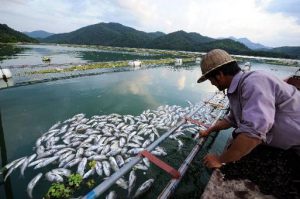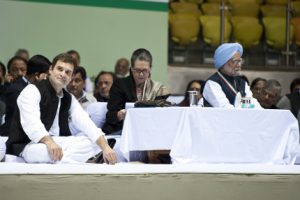If you have ever hired a city bike, joined a car club, shared garden tools within your neighborhood or ‘swapped’ clothes, you have taken part in the circular economy, a movement that aims to replace the linear ‘take, make and dispose’ culture of consumption with a radical new way of consuming not necessarily less, but better.
The idea is backed by a growing number of multinationals anxious to capture new markets but threatened by exposure to resource scarcity, and by governments forced to contend with rising pollution and carbon emissions. In such a closed-loop system, products are designed to mimic nature, with parts manufactured to be totally recyclable or upgradable. What is most appealing about the circular economy, for businesses, is that its focus is on economic benefits; gains for the environment are simply a by-product.
"The circular economy is not incompatible with our consumer culture because if products and materials can be kept in the technosphere, and biological materials placed back into the biosphere in a regenerative way, there is a vastly more efficient use of materials, much lower demands on energy and water, and less carbon impact," says Andrew Morlet, who runs the circular economy 100 programme at the Ellen MacArthur Foundation.
"We did research into medium-life complex goods, those with three to 10 year life spans such as mobile phones and computers and found that in Europe there is an estimated US$650 billion of value that could be captured through circular economic substitution of materials. For example, smart phones that are glued together on the inside are inseparable at end of life, but by shifting to a design using clips or screws or ways of separating components, you can upgrade rather than making them single use products. These don’t add to the cost of production but enable end of life reuse," says Morlet.
How businesses can get involved
Changes in the design stage are foremost, but businesses throughout the value chain can join the circular economy, says Jonny Hazell, who works on the circular economy Task Force at the Green Alliance. Manufacturers can increase demand for recycled, or reused goods through procurement requirements. He points to the UK’s Closed Loop Recycling which got funding to build their plant through a 10-year contract from Marks & Spencer and Coca-Cola to buy their recycled PET and HDPE plastic bottles, and with Veolia Environmental Services to provide the recycled bottles from households.
Andrew Morlet says that multinationals making a shift to the circular economy are driven by profitability, rather than good PR. Renault is aggressively exploring remanufacturing in its drive trains and engines, he says, recovering 75% or more of the embedded energy, water and carbon.
"They are able to sell these remanufactured parts in cars at a lower cost and make a greater profit. Equally, Unilever is looking at sector-wide initiatives that will ensure a better supply of recycled polypropylene in packaging. Kingfisher [Europe’s largest home improvement retailer] aim to make 1,000 of their products circular by 2020 through leasing, returning, product design, and using different types of plastics."
"The business case is compelling," he adds. "Earnings and shareholder returns have been very positively impacted by these investments."
A hiring economy
An even more significant barrier for companies than designing sustainable products is the business model predicated on, "selling someone a new product every year," says Jonny Hazell. "Businesses are taking on a radically different relationship with consumers as the responsibility of ownership leads back to them. In practice, this means selling a long-lasting product with a repair contract, or leasing a product, or even buying back and remanufacturing it and selling it on in a new market," he says.
The lack of uptake in leasing and hiring is due to a "lack of compelling customer propositions", he says. "There are very few leasing packages today that work out less expensive to consumers over the term of the lease that are actually cheaper than buying the product. It’s still the case that you lease only if you can’t afford to buy, because in the longer term you are worse off," he adds.
Sabine Oberhuber, co-founder of Turntoo, a Dutch company which develops and implements new business models for the circular economy, says the focus should be on the performance of, rather than ownership of, a product. Turntoo’s first assignment was the interior of RAU architects developing Circular Economy concepts together with the suppliers
"At the RAU office, the lighting, carpeting and furniture is paid for as a service. Royal Philips installed the lighting, and as they are paying the lighting bills, the system was designed to minimise light use through LED lightbulbs, sensor systems and floating ‘ceilings’ over workplaces. This led to a 50% energy reduction. We pay a fixed monthly fee, they are responsible for everything else," says Oberhuber.
Royal Philips is currently rolling out this "light as a service" concept, where consumers essentially pay to access light. Dutch carpet manufacturer Desso and furniture maker Steelcase have introduced decomposable and recyclable office furniture on lease to the office on a ‘performance’ basis.
Government legislation, such as the EU’s Waste Electrical and Electronic Equipment Directive (WEEE), which defines how waste materials are handled, in some instances works against companies’ ability to recover materials at end of life, says Jonny Hazell.
On an EU level, the Ecodesign Directive, which dictates products’ energy efficiency, should be expanded to include durability, reparability and recyclability requirements for electronics and more, he says. "We’ve seen this kind of legislation drive change in the car industry The EU’s End-of-Life vehicles directive requires cars to be 85% recyclable by weight, which led to changes, particularly in the kinds of plastics used in car parts and their labeling, making it easier to send off to recycling. There also needs to be higher taxes on materials, rather than on labour, to disincentivise waste stemming from resource intense business models," he says.
A circular economy in China
Is the circular economy feasible in a country like China, as it evolves from export to domestic consumption? Morlet says it is not only feasible, but it is a compelling reason why it needs to be explored fully. A significant new consumer will drive up pressure and prices on limited resources. As this happens there will be increased interest in models that drive greater efficiency.
For the consumers themselves, there is a tremendous opportunity for new ownership models, products made to be reusable, and new industries to emerge. China, with its significant water, energy and pollution issues needs to find solutions that address the cause rather than just dampen consumption.





